
MOLLUSKS AT CARNEGIE MUSEUM OF NATURAL HISTORY
The molluscan collection at Carnegie Museum of Natural History is the 13th largest in North America. The collection contains representatives of six of the seven Recent molluscan classes, Gastropoda, Bivalvia, Cephalophoda, Polyplacophora, Scaphopoda, and Solenogastres, with particular strengths in the Gastropoda and Bivalvia.
Section of Mollusks Collection Highlights
The Section of Mollusks collection at Carnegie Museum of Natural History contains specimens that are valuable to researchers both locally and worldwide. The collection boasts more terrestrial and freshwater mollusks from western Pennsylvania and adjacent states than any other museum and is especially strong in North American freshwater mussels (Unionoida), fingernail and pea clams (Sphaeriidae), terrestrial gastropods, and freshwater gastropods. Although the collection contains primarily recent specimens, it also contains a notable number of Cenozoic fossil specimens, some of which are type specimens.
The majority of specimens are preserved dry, but there are fluid-preserved specimens as well, including soft parts of some now-extinct mollusks. Most of the type specimens are terrestrial gastropods and freshwater bivalves (primarily Sphaeriidae) from North and South America, with many additional terrestrial gastropods from Japan and the Pacific Islands, as well as some marine mollusks. The collection also contains a number of rare and extinct species of mollusks.
Section of Mollusks Collection Inquiries
The Section of Mollusks collection database is currently on-line searchable at http://www.invertebase.org/portal/collections/index.php. For other inquiries about specimens of taxonomic groups or from geographical areas in the collection, collection questions, or requests to visit the collection, please contact the curator of collections. Normal working hours for visits are Monday through Friday 8:30 a.m.–5 p.m., though special arrangements may be made for visitors requiring extended hours.
Research requests to borrow specific specimens may also be made and are granted at the discretion of the assistant curator of the Section of Mollusks. Specimen loans are typically made to permanent staff at universities and museums; loans to students are typically made in care of their advisors who are responsible for the loan. Any destructive sampling of the specimens such as dissection, tissue sampling (e.g., for molecular studies), radula studies, or shell chemistry studies must be approved in writing in advance. All parts remaining after such sampling must be returned. At the time the loan is returned, we request confirmation of identifications or re-identifications. Please acknowledge Carnegie Museum of Natural History as the source of the material. We request copies of any publications resulting from the study of the loaned material. We especially appreciate when catalog numbers are mentioned in publications.
Former Curators and Other Notables
- H.H. Smith, Curator 1895–1903
- George H. Clapp, Honorary Curator 1900–1949
- Arnold E. Ortmann, Curator 1903–1927
- Victor Sterki, Section Assistant 1909–1933
- Stanley T. Brooks, Curator 1929–1945
- Betty Watt Brooks, Curatorial Assistant 1930–1945
- George M. Kutchka MacMillan, Curator 1946–1951
- J. Jose Parodiz, Curator 1951–1982
- John D. Haseman, Collector
- Prof. Herman Wright, Collector
- William Burnett, Collector
H.H. Smith
H.H. Smith served as the first curator of Invertebrate Zoology at Carnegie Museum of Natural History. He was employed on what we would now consider a “consultant” basis, and was instrumental in acquiring the beginnings of the Mollusks collection. Smith was born in Manlius, NY, in 1851. He graduated from Cornell University. He became curator in 1895 and retired from that position, due to ill health, in 1903. He moved south to Alabama where he became Curator of the Alabama State Museum. He passed away in 1919. Carnegie Museum’s molluscan collection had its beginning with the 3,000 species collected by Smith, in addition to other specimens purchased from F.R. Holland and donated by George Clapp. Despite being at Carnegie Museum of Natural History for only 8 years, Smith set the stage for others who were to follow. Smith made several trips to Brazil 1870–1886 and collected mollusks and other natural history specimens. Smith also took trips to the West Indies, Mexico, and Colombia, further pursuing his interests in natural history. When Smith retired to Alabama, he undertook extensive field trips throughout the state collecting freshwater and terrestrial mollusks. Despite collecting all manner of specimens, Smith’s particular interests were the Unionidae bivalves and Pleuroceridae gastropods of the southeastern United States. Arnold Ortmann succeeded Smith as curator.George H. Clapp
George Clapp was born in 1859. He was extremely involved in the educational institutions that were located in Pittsburgh. He became a trustee of the Carnegie Institute in 1896 and continued to serve in this capacity for 53 years. This service ended only with his death. He also served as a trustee for the University of Pittsburgh and the Carnegie Institute of Technology (now Carnegie-Mellon University). The University of Pittsburgh honored him with a ScD in 1915 and named the biology department building, Clapp Hall, in his honor. The first accession in Invertebrates at the museum was a collection of 546 specimens representing 60 species of shells from Allegheny County, Pennsylvania. This donation was one of some 190 donations made by Clapp to the museum. Clapp was appointed honorary curator of malacology in 1900. Overall, he donated more than 15,000 lots to the section. Though his collection did contain marine, freshwater, and terrestrial mollusks from around the world, most of the material he donated represented terrestrial shells of North America north of Mexico. Clapp’s service to the people of Pittsburgh ended with his death in 1949 at the age of 90.Arnold E. Ortmann
Arnold E. Ortmann was born in 1863 in Magdeberg, Prussia. He studied at the Universities of Kiel, Strassburg, and Jena. He received his PhD from the latter institution in 1885. Ortmann came to the United States in 1894 and was Curator of Invertebrate Paleontology at Princeton University. He left Princeton in 1903 to come to Carnegie Museum of Natural History. While still at Princeton, he worked on the Report upon the Tertiary Invertebrates of the Princeton Expedition to Patagonia. Upon coming to Carnegie Museum of Natural History, Ortmann undertook extensive studies of the Decapoda: Crustacea, particularly crayfish. Following these studies, he began an intensive study of the unionids (freshwater mussels) found in the drainages on either side of the Appalachian Mountain Range. His work on the unionids resulted in several major monographs and numerous shorter papers. As early as 1909, Ortmann had commented on the effects of pollution in our waterways and its effect on the unionid populations. Ortmann’s publication on the Naiads of South America was based primarily on material from the Haseman Collection. Haseman made this collection during an expedition to South America. At the time, it represented material from regions of the Amazon basin not yet explored by other scientists. In addition to his duties at the museum, Ortmann was on the faculty of the University of Pittsburgh. He rose to the level of Professor and the University conferred the degree of ScD (Doctor of Science) upon him in 1911. Ortmann died suddenly in 1927 at the age of 64. Upon his death, Stanley T. Brooks was appointed to care for the collection.Victor Sterki
Victor Sterki was born in Solothurn, Switzerland, in 1846. He studied at the University of Bern and Munich University and earned his MD in 1878. Sterki practiced medicine for several years in Europe before emigrating to the US in 1883. Sterki settled in Ohio and set up his medical practice there. He eventually retired from the practice of medicine in 1900 and pursued the study of natural history full-time. His main malacological interests were minute species, including the gastropod family Pupillidae and the bivalve family Sphaeriidae. Carnegie Museum of Natural History acquired his Pupillidae collection of almost 4,000 lots. Later the museum acquired the Sphaeriidae collection, which numbered more than 12,000 lots at the time of Sterki’s death. In addition, the Mollusks library benefited by the addition of Sterki’s library. This library contained 275 bound and unbound monographs as well as 1,500 reprints. Sterki was an assistant in Invertebrates 1909–1933. He passed away in 1933 at the age of 87. At the time of his death, Sterki was working on his monograph The Sphaeriidae of the World, a work that was never finished. The journal Sterkiana was named in his honor.Stanley Truman Brooks
Stanley Brooks was born in Mound City, Kansas, in 1902. He studied at the University of Kansas and undertook his graduate studies at the University of Pittsburgh where he received his PhD in 1929. He had worked under Ortmann. Upon Ortmann’s death, Brooks was appointed custodian of the mollusks at the museum. After earning his PhD, he was elevated to a curatorial position. Brooks wrote his thesis on the land snails of Pennsylvania. Brooks also studied the molluscan fauna of Kansas. In addition, he spent several summers studying the fauna of Newfoundland, Canada. Stanley Brooks, with his wife Betty Watt Brooks, was the first person to publish a catalogue of the type holdings of the mollusk collection. In 1931, he published a catalogue of the Pelecypoda followed by one on the Amphineura and Gastropoda. Brooks left the museum in 1945. Brooks also worked as a reporter for the Pittsburgh Post-Gazette 1944–1945 and during his tenure at Carnegie Museum performed analyses of parasitic specimens for the Western Pennsylvania Hospital. Upon leaving Carnegie Museum of Natural History, Brooks worked as a scientific specialist for the US Military. He left this position in 1947. Brooks worked for the United States Department of Commerce from 1946–1950 (stationed in Germany). Other positions that he held were with the US Public Health Service (1950–1953), the American Tobacco Company (1953–1955), and the National Institute of Health (1956–1958). Brooks passed away in 1958 at the age of 56.Betty Watt Brooks
Betty Watt Brooks was born in 1898. She received her bachelor and masters degrees from Wellesley College. She worked for Professor Albert Francs Blakeslee and the Carnegie Institute of Washington before coming to Pittsburgh to further her studies. She began her studies at the University of Pittsburgh in 1925 and received her PhD in 1934 (taking time off to raise a family). Her research project was a study of fossil plants from the Payette Formation of Idaho. Betty married Stanley Truman Brooks in 1927. She worked alongside her husband in Mollusks at the museum 1930–1945, at which time S.T. Brooks took a leave of absence from the museum. While at the museum, Betty collaborated with Stanley on writing the type catalogs for the Mollusks collection. In addition, Betty accompanied Stanley on several of his collecting expeditions in Newfoundland, Kansas, and other states in the southeastern US. After leaving Carnegie Museum, Betty Brooks worked for the United States Department of Commerce 1946–1950 (stationed in Germany), as a regional director for the Girl Scouts (1953–1955), and for the United States Public Health Service (1957–1970). She retired from the Public Health Service in 1970 and died in 1978.Gordon M. Kutchka MacMillan
Gordon Kutchka was born in Muehlein, Germany in 1906. He earned his MS from the University of Pittsburgh in 1937. Kutchka started as an assistant in Invertebrates at the museum in 1929, and was appointed to the permanent staff in 1939. He became a curator in 1946. He held the position of assistant curator until 1951 when he left the museum. In 1938, due to anti-German sentiments, Kutchka changed his last name to MacMillan. MacMillan served with the armed forces 1944–1945. After leaving the museum, he worked for the Allegheny County Sanitary Authority (Pennsylvania) until 1971. While at the Authority he held the position of chemist. While at Carnegie Museum, MacMillan worked primarily on terrestrial gastropods. He published one paper on the land snails of West Virginia with Brooks and later published a comprehensive monograph on the terrestrial gastropods of West Virginia. He also studied the terrestrial gastropods of Utah, Wyoming, Montana, Kansas, and Nebraska. In all, MacMillan published more than 50 papers. He died in 1981 at the age of 75. After MacMillan left the museum, Juan Jose Parodiz was appointed to replace him as curator.Juan Jose Parodiz
J.J. Parodiz was born in Buenos Aires, Argentina. He received his degree from the Instituto Nacional Ciencias Naturales. Parodiz studied paleontology and malacology while in Argentina. While serving in the Argentinean Navy, he participated in several oceanographic expeditions to the South Atlantic and sub-Antarctic region. Parodiz worked at the Museo Argentino de Ciencias Naturales for almost 20 years before moving to the United States. In 1951 Parodiz accepted a position at Carnegie Museum and shortly thereafter was appointed Curator of Invertebrate Biology, a position he held for some 30 years. He accepted the title of Curator Emeritus in 1982 and continued to work on the South American naiads and Neogene fossils of the southeastern United States. Parodiz published more than 100 papers. He collected throughout South America in addition to the eastern United States. Parodiz’s activities greatly enlarged the museum’s collections in the Unionoida and freshwater and terrestrial gastropods of North and South America, both fossil and recent. He became a member of the American Malacological Society in 1949 and served as president in 1965. J.J. Parodiz passed away on September 24, 2007, in Allentown, PA at the age of 95.John D. Haseman
In 1906, Professor J.C. Branner invited Dr. C.H. Eigenmann to join him on an expedition to collect fish in Brazil. Eigenmann was a professor at Indiana University and Curator of Fishes at Carnegie Museum. Eigenmann was unable to go on the expedition; however, a student of his, John D. Haseman, was willing to participate. With the approval of W.J. Holland, Director of Carnegie Museum of Natural History, John D. Haseman was given the authority to represent the museum on the expedition. Haseman left for South America on October 5, 1907, and reached Bahia, Brazil on October 19. Unfortunately, Dr. Branner’s expedition was just about to leave. Haseman was not able to leave with Branner; however, Haseman received a great deal of useful information from him. Haseman received permission from Holland to proceed with an expedition of his own. Haseman undertook this expedition—ten individual trips—with only the assistance of native laborers. These individual trips lasted from one to eight months. Haseman originally expected to be in South America for only a year, but eventually ended up staying for two and a half years. Haseman’s collecting took him to Brazil, Argentina, Uruguay, Paraguay, and Bolivia. While Haseman was mainly interested in collecting fish, he also collected other freshwater animals including freshwater mussels. A. E. Ortmann used this collection in the preparation of the study South American Naiads. This paper was published in 1921. In it, thirteen new taxa are described from the Haseman Collection. Haseman never finished his academic degree under Eigenmann’s tutelage. He did continue to pursue field studies in the scientific discipline of ichthyology. Of his travels through the wilds of South America, Haseman said, “After the noises of the day the hush which comes at night-fall causes even the hardened traveler at times to shudder. No man over fifty years of age should attempt to enter this region. A hard heart and cold blood are useful to him who invades it.”Professor Herman Wright
In 1932, Carnegie Museum received a donation of the collection of Herman P. Wright (died 6 Nov. 1930 at age 28). Wright, a professor at Indiana University, amassed a collection of freshwater mollusks while studying the Tippecanoe River System of northern Indiana. The collection represents not only the main river, but also tributaries and 95 associated ponds and lakes. Sub-fossil taxa were obtained by taking 284 marl borings. This collection, when fully curated, allows study of the variation within taxa from the headwaters of the Tippecanoe River to its end where it joins the Wabash River as well as taxa from both riverine and lake habitats. The collection was donated to the museum in 1932 by the Professor’s widow, Christina Wright.William Elliott Burnett
William Elliot Burnett was born May 22, 1872, in Garland County, Pennsylvania and died August 20, 1933, at Bradford, Pennsylvania. In 1933, for the fifth time in almost as many years, the extensive collections of Carnegie Museum Mollusks were augmented significantly, this time by a collection of more than 4,700 lots of marine, freshwater, and land mollusks from the estate of William Elliott Burnett of Bradford, Pennsylvania. This collection was bequeathed to the institution in 1933, after Burnett’s untimely death as a result of an accident occurring in August of 1933. Mr. Burnett had been a carpenter and cabinetmaker for 48 of his 64 years and throughout his life had made a hobby of shells, minerals, and American Indian artifacts. Although living inland, he was able to build up the collection of marine shells through exchange as well as by his own efforts. The many carefully prepared and authentically labeled specimens reflect his interest and patience as well as the high esteem that was held for him by his colleagues in shells. Both Mr. Burnett’s father and grandfather were collectors and students of nature so it is only natural that he also had a similar avocation.Behind-the-Scenes Tour in Mollusks
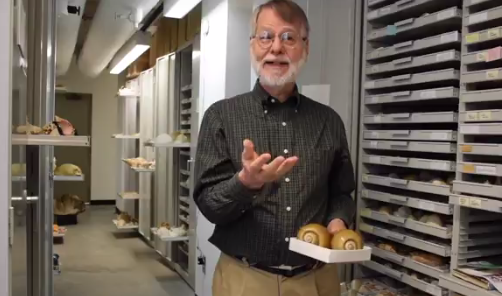

Get a fascinating behind-the-scenes peek at scientists in action, and see some of the millions of research specimens in the collection. Check the visitor guide on the day of your visit for more information. From octopuses to oysters, get an up-close look at the weird and wonderful collection of mollusks.
Tours are usually available on the second Saturday of each month with tours available every half hour from 1–3 p.m. However, these tours have been paused due to covid-19.
Mollusks Blogs

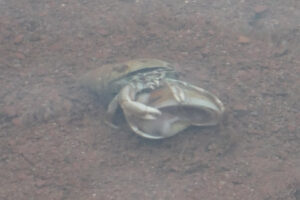
The Hermit Crab and the Moon Snail
by Timothy A. Pearce and Mandi Lyon When a snail needs a larger shell, it simply grows its shell larger, continuing the spiral. However, …
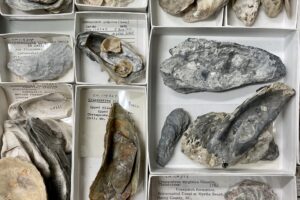
Oysters Swim Towards a Siren Soundscape
by Sabrina Spiher Robinson “’O Oysters, come and walk with us!’ The Walrus did beseech. ‘A pleasant walk, a pleasant talk, Along …
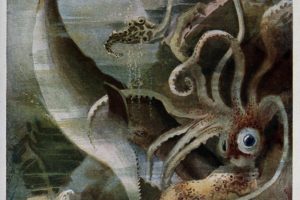
Shark-ish Beasts Versus Cephalopods: Which is Predator, Which is Prey, and is One an Artist?
by Sabrina S. Robinson and Timothy A. Pearce We’ve all heard the legend of the sperm whale and the giant squid, locked …
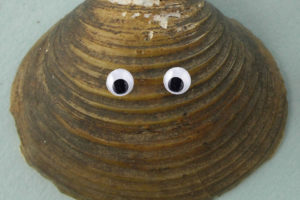
Prozac and Caffeine in Our Wastewater: Effect on Freshwater Mollusks
by Tim Pearce Chemicals in our medications, supplements, foods, and beverages often pass through our bodies and wind up in our wastewater. …
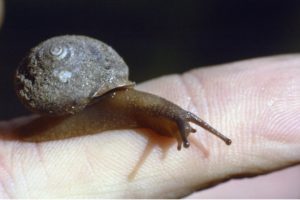
Can Snails Feel Love?
by Dr. Timothy A. Pearce A reader recently asked whether snails can feel love. I sometimes wonder that too; do my pet …
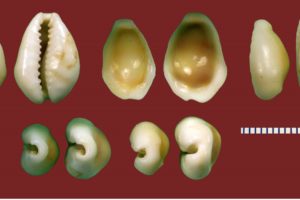
Sea Snails from Christmas Island
by Timothy A. Pearce There really is a Christmas Island. It is in the Indian Ocean about 250 km (155 mi) SW …
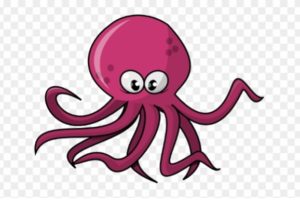
How to Talk with an Extra-Terrestrial Alien? Practice with an Octopus
by Timothy A. Pearce Despite typical depictions of outer space creatures in movies and on TV, the chance that extra-terrestrial aliens will …
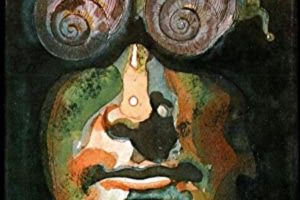
Happy Highsmith Halloween! A review of two scary snail short stories by Patricia Highsmith
by Timothy A. Pearce and Alice W. Doolittle Patricia Highsmith was an accomplished author of thrillers and horror stories from the 1950s …
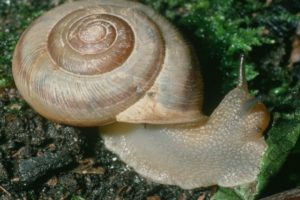
Diet-wise, Snails are Like Cows, Not Bugs
by Timothy A. Pearce When classifying organisms into broad categories, many people would group snails with insects rather than mammals. When it …

